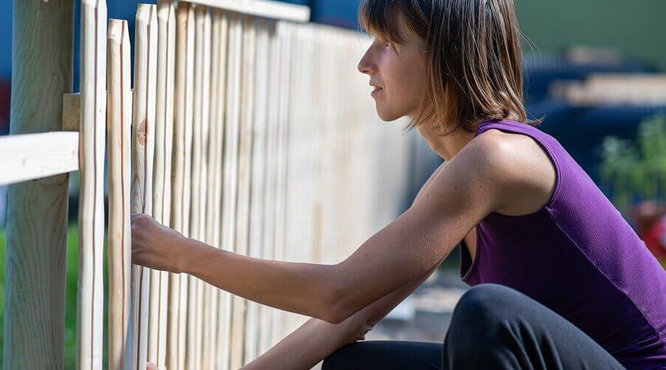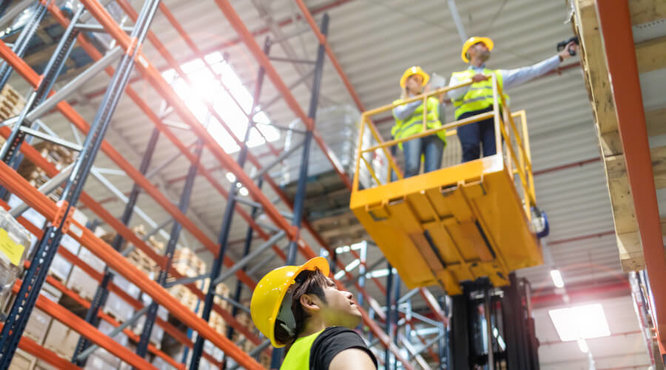How to Keep Warm at Work During Autumn & Winter
If you’re searching for tips on how to keep warm at work, a cold snap has probably already hit, leaving you to realise you’ve left it a bit late. Like you did last year…
Oh well, there’s no time like the present. If you want to keep warm at work, or make sure that your staff are comfortable, happy, and healthy as it gets colder, there are loads of hints and tips.
If you keep reading, you’ll find some advice of keeping warm:
-
In the office.
-
In industrial areas.
-
Outdoors.
-
Working at home.
First, here’s an overview of different types of space heaters available, giving you an idea of what you could use to heat a specific area.
Electric Fan Heaters
Electric fan heaters warm up the air with elements and circulate it around a space. They’re really portable and offer quick heating, making them perfect for homes, offices, shops, and other smaller spaces. You can also find industrial fan heaters that will heat up factories, warehouses, and other demanding areas. But, they do need to be plugged in, and with rising electricity costs, they can be a more expensive option.
Infrared Heaters
Infrared heaters have lamps that give off radiant heat, which you feel directly. They’re really efficient, offer immediate heat, and because they don’t have to heat the air, they’re great outdoors. You can use an infrared heater anywhere, and since they don’t blow air, they don’t circulate airborne particles like dust. The issue with radiant heat is that it has limited reach, so you need one nearby, and you might not feel the benefit in a cluttered area.
Gas Heaters
Gas heaters burn gas to create a flame which heats the air. They’re really versatile, portable, and cheap to use. You can use one anywhere unless the model needs power for a fan or electric ignition, but the space must be well ventilated because pollutants like carbon monoxide and moisture can build up if there’s nowhere for it to escape, which is dangerous.
Direct Diesel Heaters
Direct diesel heaters burn fuel and blow air over the naked flame directly, making them 100% efficient in terms of energy use. They give you large volumes of heat, but they’re not safe indoors, and you should only use them in larger spaces with plenty of fresh air and ventilation. They’re great for hangars, material yards, and other wide-open, outdoor/semi-outdoor spaces.
Indirect Diesel Heaters
Indirect diesel heaters burn fuel inside a combustion chamber, which heats up passing air, allowing it to provide completely clean heat, with fumes exhausted separately. They are really versatile, because you can use them indoors and exhaust fumes out of the space, or use them outdoors and duct clean heat inside. Although they’re safe and effective, the set up involved makes them ideally suited to temporary areas, like marquee tents and event spaces.
Radiators
Central heating and electric radiators are really common, using heated water, oil, or another fluid that warms each unit, allowing it to give off radiant heat. They are really effective, but if you don’t have central heating installed already, it’s not exactly a quick fix. Electric radiators are a lot easier to implement in a building, but generally, this type of heating system is a permanent solution.
Air Conditioning
Not just for cooling, air conditioning systems can be really efficient and effective at heating a space. There are loads of options, including central systems, portable split units, and packaged terminal air conditioners, offering you a bit of scope in the installation, or just when you need a temporary solution. But, if you’re not already set up with a system, it’s probably not going to be your first choice.
Although there’s no law or minimum or maximum working temperatures, guidance does recommend at least 16ºC or 13ºC if physical work is involved. Health and safety law does state that employers do have to keep the temperature at a comfortable level.
How to Keep Warm in the Office
-
Wear layers.
First things first, when it gets a bit colder, start wearing some extra layers to work. A jumper, cardigan, or hoodie can keep you warm indoors, and it means you can add and remove layers as you need to, dodging the office politics and thermostat wars.
-
Use a hot water bottle or heated blanket.
A great way to keep yourself warm and comfortable without affecting the whole office space. A hot water bottle or heated blanket can be really cosy, heating you directly when you need it, and they’re also a lot more energy-efficient for the environmentally conscious.
-
Keep the cold out.
Stop the cold from outside creeping in by keeping windows shut and doors closed over so you can retain the inside heat. If there’s a draft sneaking in from somewhere, check the insulation or block it, and you’ll notice a big difference.
-
Turn on the central heating.
If your office or workplace has a heating system installed, it might be time to turn it on. Setting the thermostat to a comfortable temperature a few degrees below what you’re aiming for will keep things comfortable for everyone, and that’ll help maintain the temperature of the room consistently.
-
Bring in space heaters.
If you’re not lucky enough to have a central heating system in the building, space heaters are a great way to improve the working conditions and heat areas. Electric fan heaters and infrared heaters are affordable, small, and portable, but fan heaters can be expensive to run.
How to Keep Warm in Industrial Areas
-
Wear layers.
Wearing some extra layers to work can keep you warm in wide-open industrial areas. A jumper, cardigan, or hoodie can keep your body warm, while thick socks, hats, and gloves can keep your extremities warm, as long as it’s safe to wear them.
-
Use a heated/insulated mat.
When an industrial workplace like a factory or warehouse has a standard industrial floor, they tend to be painted or coated concrete, and they can get very cold. If you stand in place on a cold floor, like working on a production line, heated or rubber matting insulates the point of contact, keeping you much warmer and more comfortable.
-
Integrate heaters.
It’s uncommon for industrial buildings to have a central heating system, as they would be too expensive to be effective. Instead, spot heating can work really well, and large cabinet heaters, industrial fan heaters, infrared heaters, and diesel heaters are all great options.
-
Retain existing heat.
It’s easy for heat to escape from large industrial spaces, and many of these areas have wide openings allowing people, vehicles, and cargo to move in and out quickly. You can mitigate heat loss and keeping any unused windows and doors closed, installing air curtains, or installing PVC strip curtains.
How to Keep Warm Outdoors
-
Wear layers.
It’s important to wear extra layers when you’re working outdoors. Layer work coats over jumpers and jackets, wear thick socks and work boots, and wear hats. If you can work in gloves, wear them to protect your hands.
-
Keep clothes dry.
If you’re doing physical work that makes you sweat, or your clothes are likely to get wet, make sure you have a place you can dry them or change into fresh, dry clothes.
-
Take breaks in heated areas.
Make sure you have access to a heated area for breaks and lunches, and don’t avoid them. This is really important, as you can miss your body’s signs when you’re doing something physical, and risk overexposure. Get indoors or in a shelter regularly.
-
Use suitable heaters.
Rugged, powerful heaters can kick out a lot of heat and take the edge off the chill when you’re outdoors. Gas bin heaters, LPG space heaters, direct diesel heaters, and indirect diesel heaters will all put up a good performance in demanding areas. Infrared heaters can warm you up directly, so you can feel their effects even if the air is very cold and the conditions are windy.
How to Keep Warm Working at Home
If you get to work remotely or in a hybrid model, the winter is when the bills start to chip away at the money you save on commuting and lunches. If you want to save money on heating the home, there are plenty of options.
-
Wear lots of comfy clothes.
At home, you’re not under the eye of a dress code, or judgemental peers. Feel free to spend the day wearing lots of warm, comfy clothes like pyjamas, slippers, dressing gowns, or wrapping yourself up in a big cosy blanket.
-
Use a hot water bottle or heated blanket.
A great way to keep yourself warm and comfortable without affecting the whole office space. A hot water bottle or heated blanket can be really cosy, heating you directly when you need it, and they’re also a lot more energy-efficient for the environmentally conscious.
-
Keep the cold out.
Stop the cold from outside creeping in by keeping windows shut and doors closed over so you can retain the inside heat. If there’s a draft sneaking in from somewhere, check the insulation or block it, and you’ll notice a big difference.
-
Make the most of your kitchen.
Since you’re at home, make the most of being there and drink plenty of hot drinks, and have something warm for breakfast and lunch. It doesn’t have to be anything extravagant; some hot honey and lemon or porridge will warm you up while being a healthy option.






